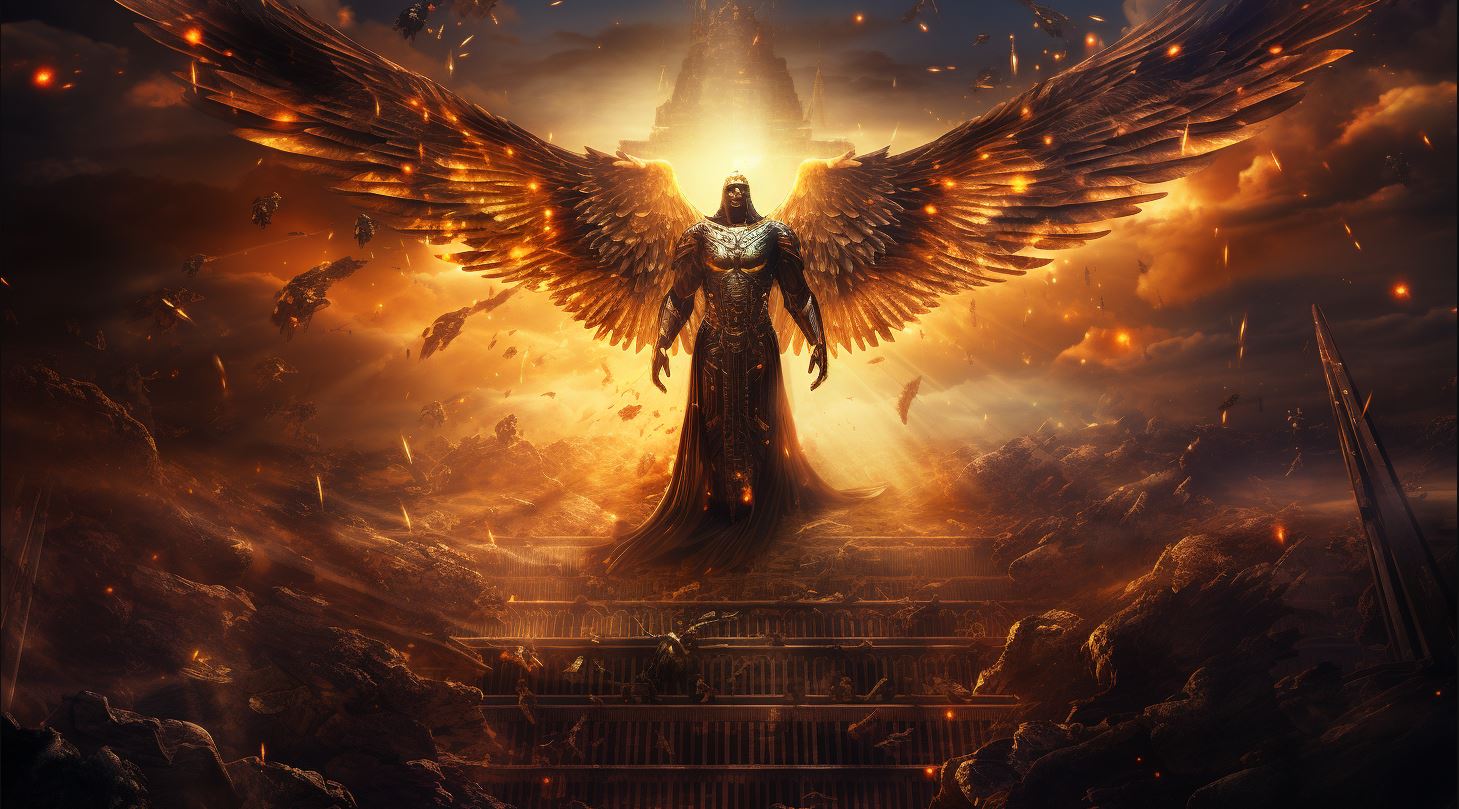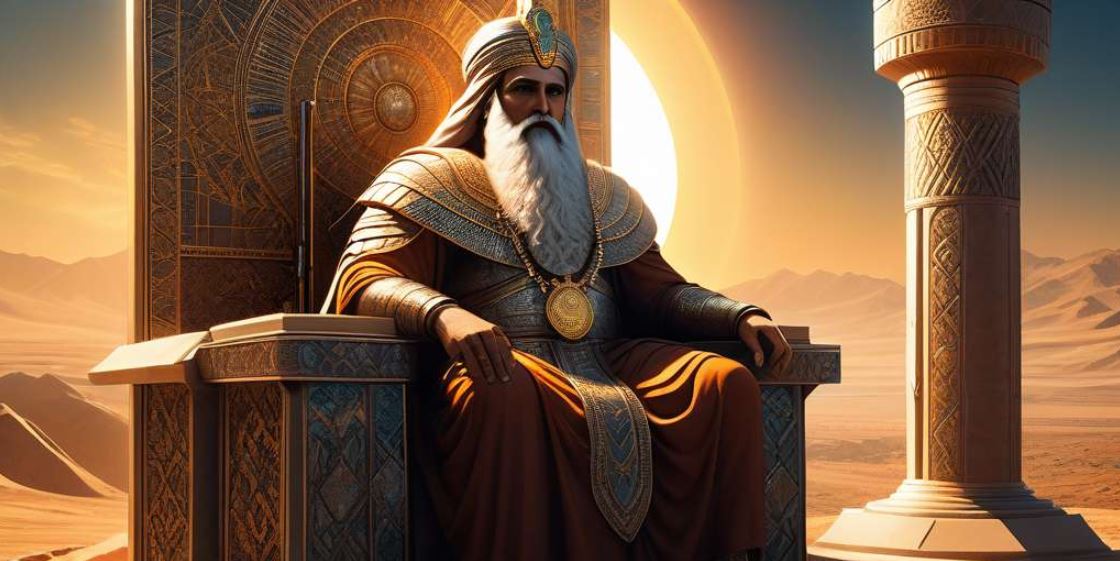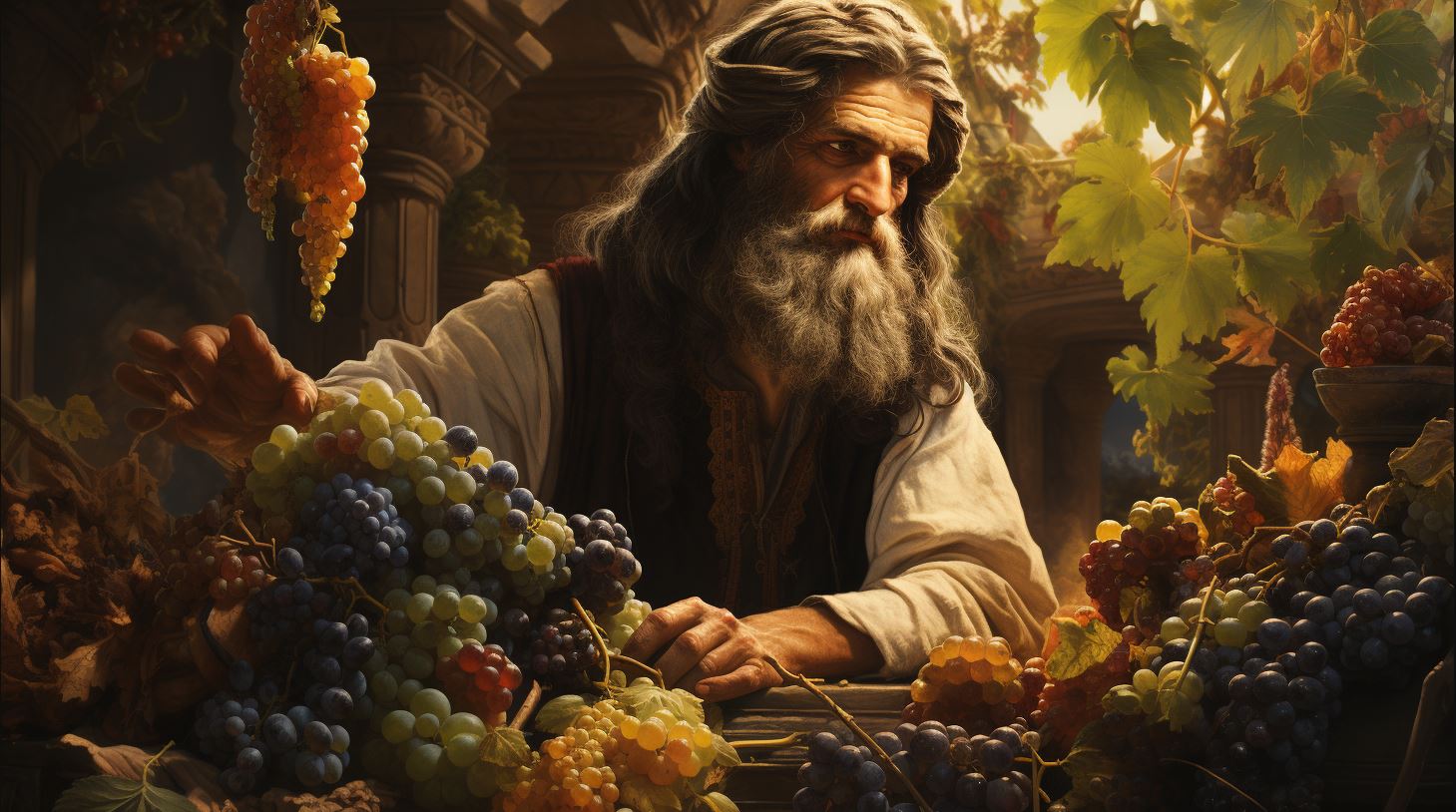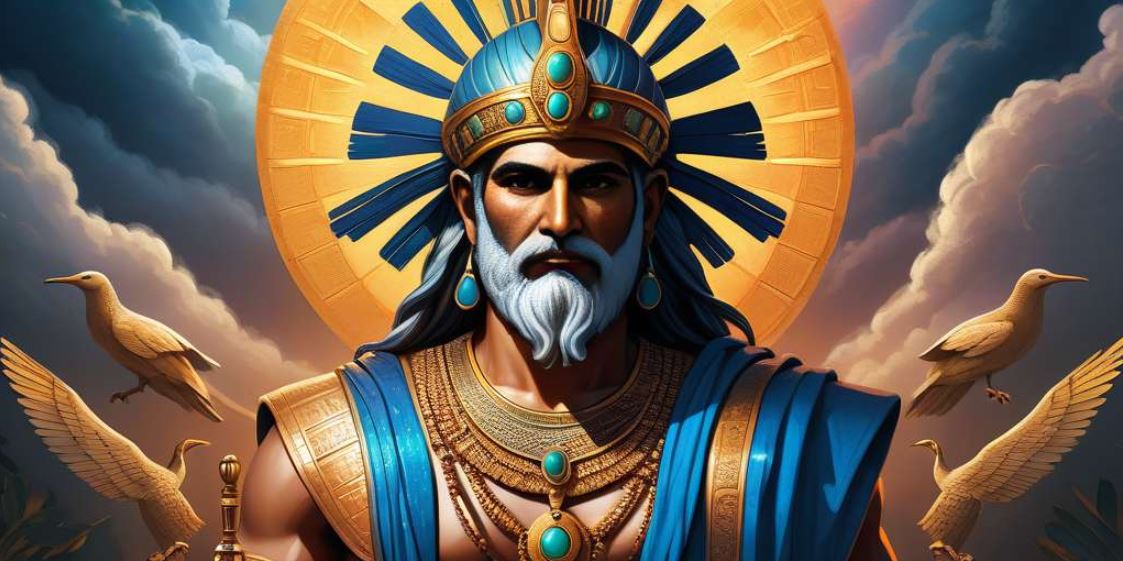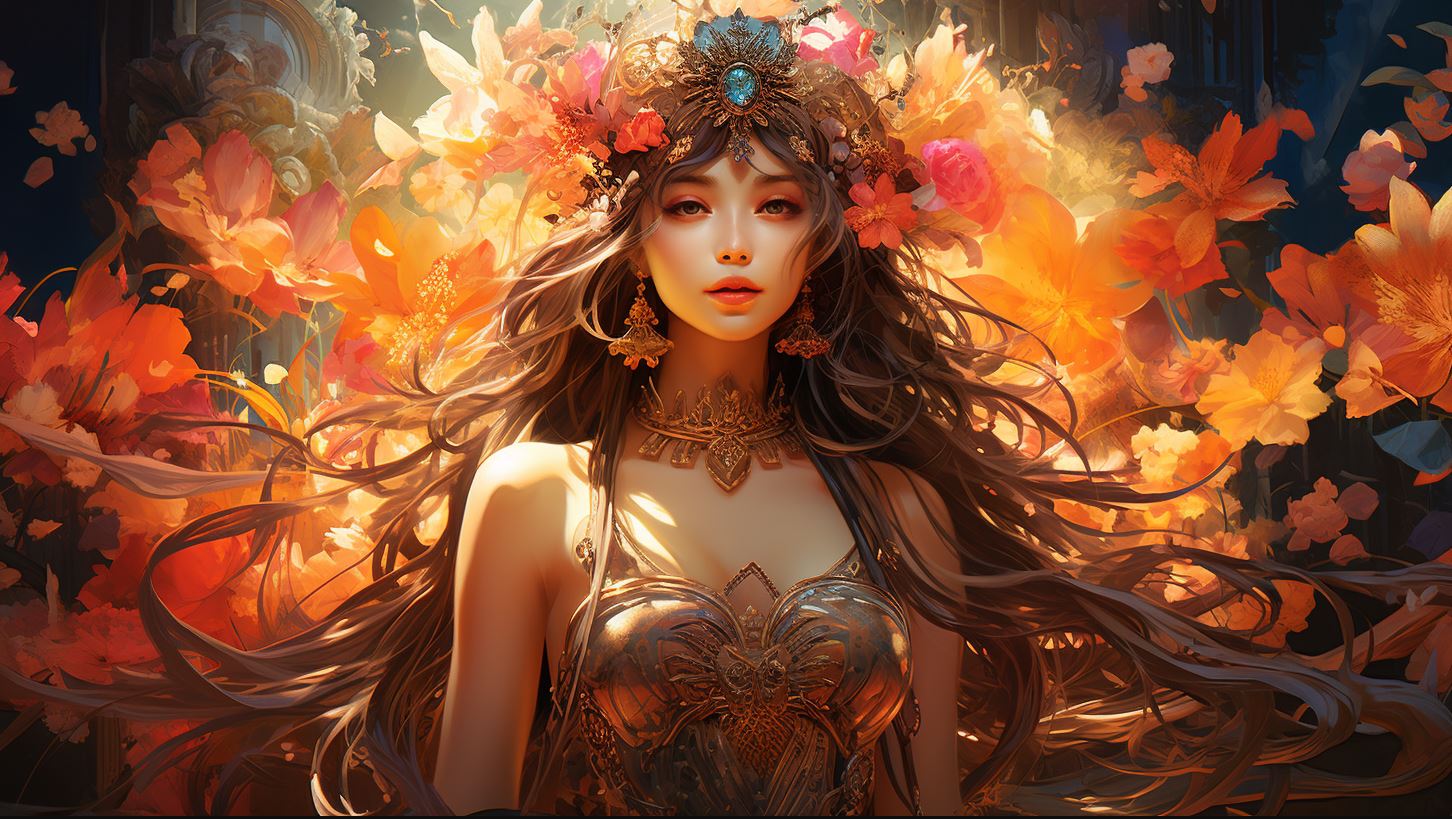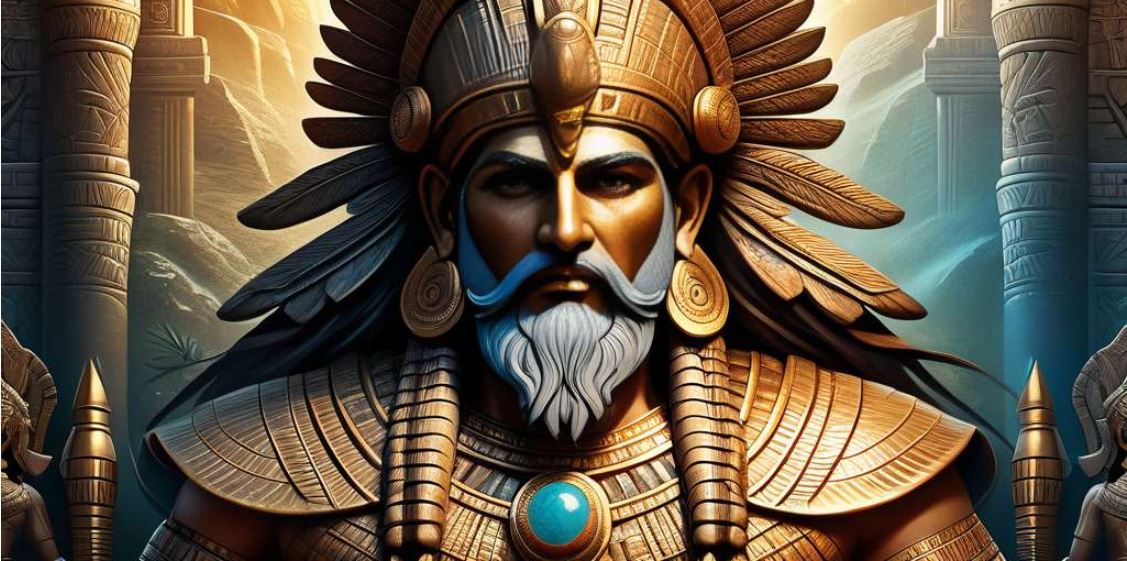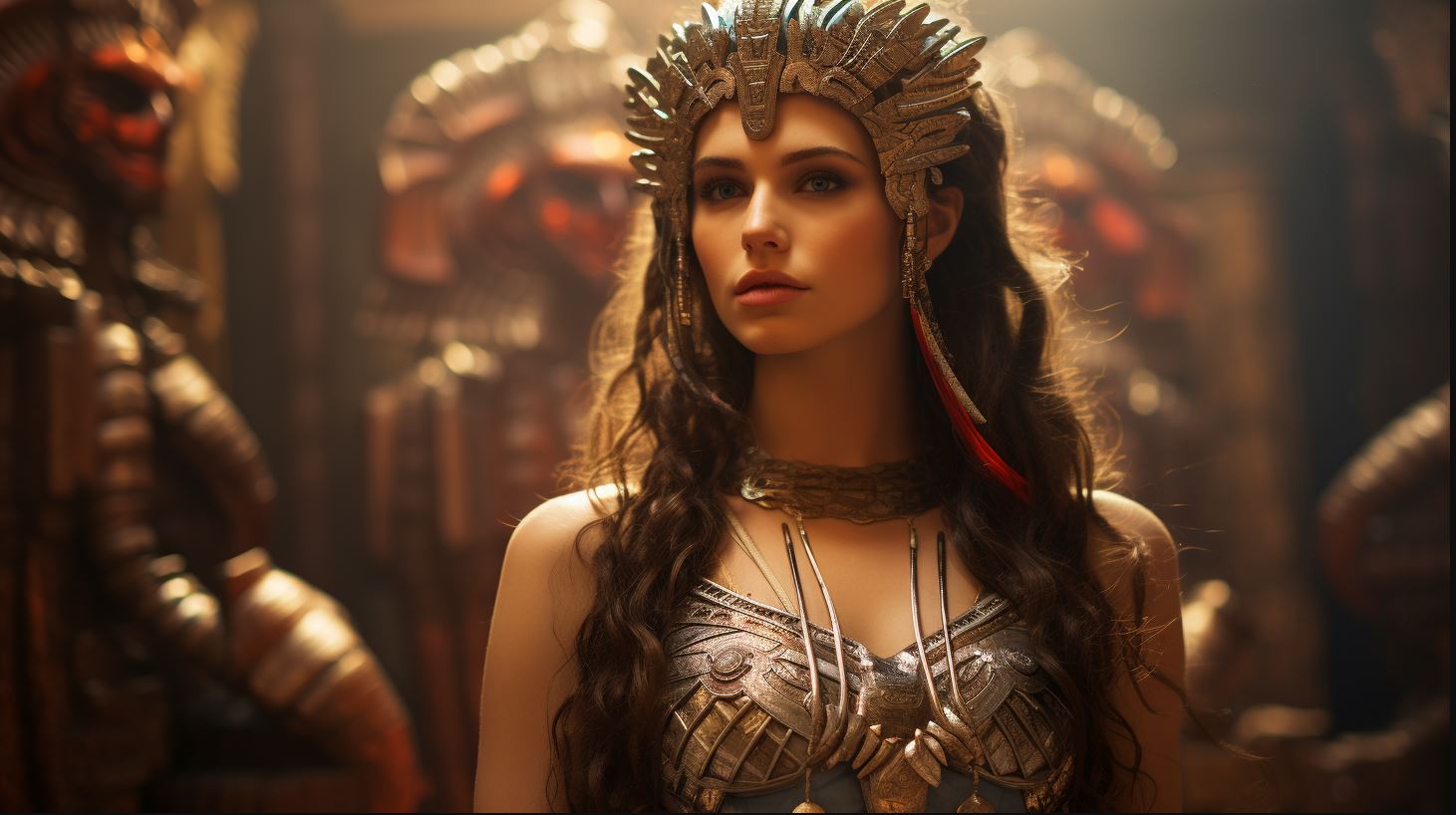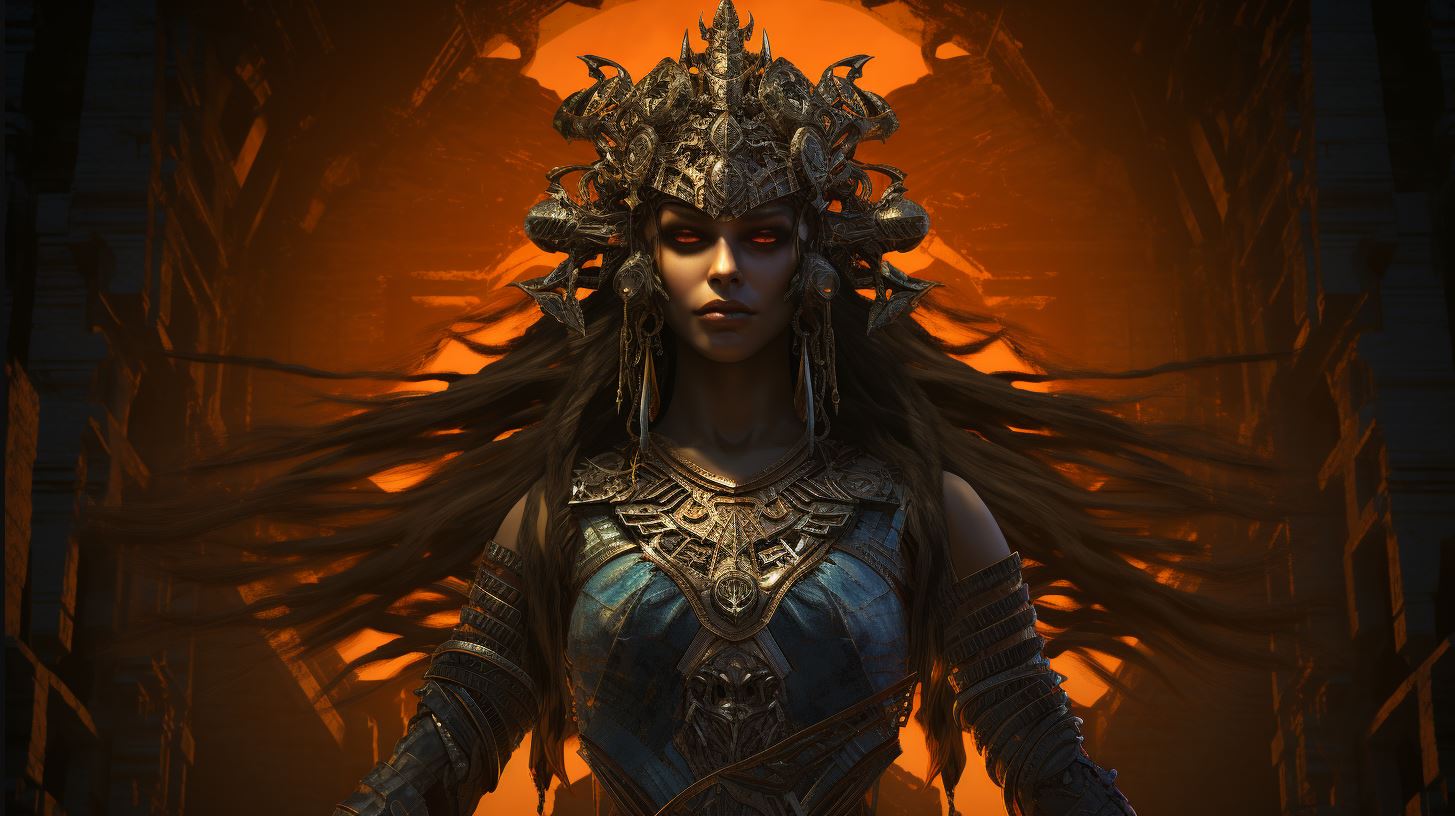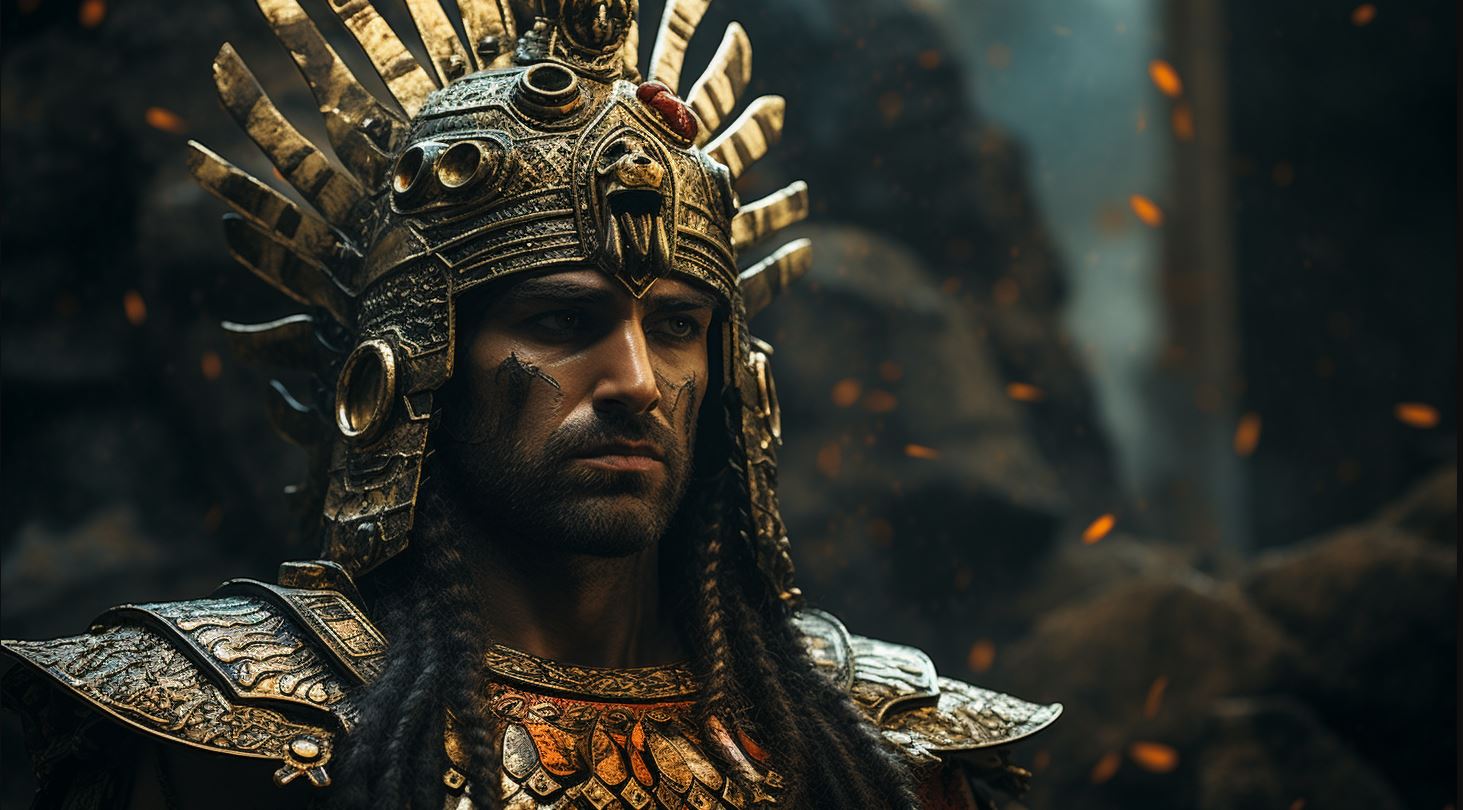Anu: The Supreme Sumerian God and Ruler
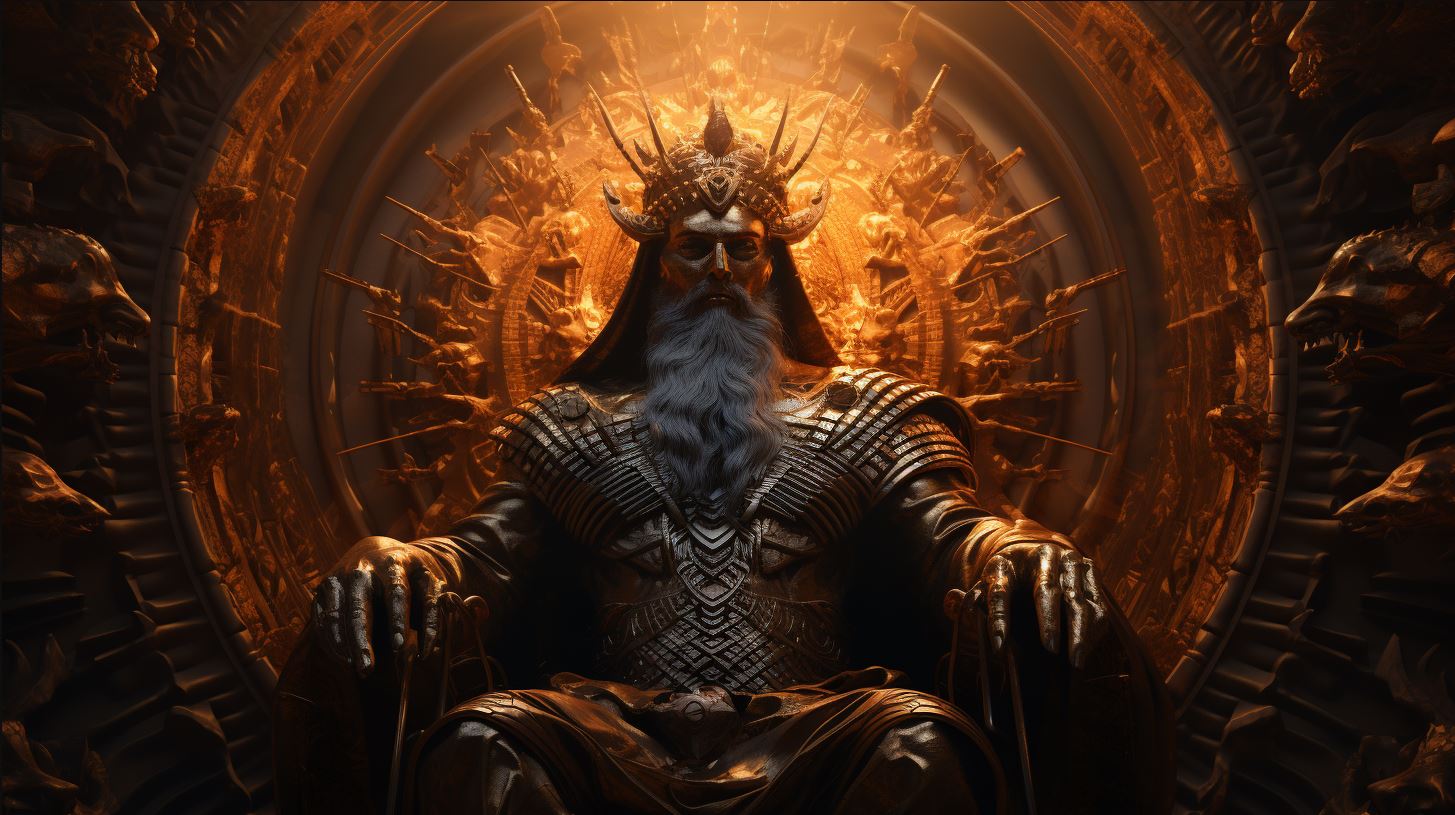
Anu, the supreme Sumerian god, holds a significant place in ancient Mesopotamian mythology and religion. Worshipped throughout the region, Anu is revered as the ruler of all kings and the father of the gods.
Associated with animals, vegetation, and the spirit realm, Anu’s sacred city is Uruk, where he is often worshipped alongside the goddess Inanna. Temples dedicated to Anu can be found in Mesopotamia, where offerings are made for good weather and abundant harvest.
This article explores the origins, mythology, and legacy of Anu within the context of Sumerian culture.
The Origins of Anu: Exploring the Ancient Mesopotamian Deities
Anu, the supreme god of Mesopotamia, played a pivotal role in the ancient Sumerian pantheon.
Believed to be the father of all gods, Anu held a position of immense power and authority. This section delves into the origins and significance of Anu, shedding light on his association with heaven and earth, as well as his role as the progenitor of the gods.
Anu: The Supreme God of Mesopotamia
Anu, also known as An, stood as the primary deity in the Sumerian and Mesopotamian religious beliefs. He was revered as the divine ruler and held ultimate control over the destinies of kings and kingdoms.
Across various cities in Mesopotamia, Anu was worshipped for his ability to bestow favorable climate and abundant harvests upon his devotees. His power and influence extended beyond the realm of humanity, encompassing animals, vegetation, and even spirits and malevolent demons.
Anu’s Association with Heaven and Earth
Anu’s association with heaven and earth solidified his position as a transcendent deity. Mesopotamians believed that Anu occupied the highest level of the three celestial realms. He held sway over the celestial bodies, influencing the movements of stars, planets, and other heavenly objects.
This cosmic connection emphasized Anu’s role as a creator god, believed to have played a pivotal role in the formation of the universe alongside other deities. It was in this divine capacity that Anu became intertwined with notions of cosmic order and harmony.
Anu’s Role as Father of the Gods
Anu’s status as the father of all gods held significant importance in Mesopotamian mythology. As the progenitor, Anu birthed numerous deities who held essential positions within the pantheon. Among his divine offspring were Adad, Enki/Ea, Enlil, Nanna, Nergal, Šara, as well as goddesses like Inana, Nanaya, Nidaba, Ninsinna, Ninkarrak, Ninmug, Ninnibru, Ninsumun, Nungal, and Nintu.
Anu and His City: Exploring the Relationship with Uruk
Uruk, the sacred city of Anu, held immense cultural and religious significance in ancient Mesopotamia. Located in present-day Iraq, Uruk was not only a center of political power but also a focal point of religious worship.
The city’s association with Anu, the supreme Sumerian god, further enhanced its importance.
Uruk: The Sacred City of Anu
Uruk stood as a testament to the might and influence of Anu. As the primary religious center dedicated to the god, Uruk housed magnificent temples and shrines that served as places of worship and offerings.
These sacred spaces were meticulously built, adorned with ornate sculptures, and lavishly decorated. Devotees from various regions would embark on pilgrimages to Uruk to express their reverence for Anu and seek his blessings.
Anu and Inanna: Worship and Mythology in Uruk
In Uruk, Anu’s presence intertwined closely with that of the goddess Inanna. Both deities were worshipped together, and their combined influence permeated every aspect of life in the city. The mythological narratives surrounding Anu and Inanna often depicted their intricate relationship, highlighting their roles as divine parents and patrons of Uruk.
Festivals and ceremonies dedicated to these deities attracted throngs of worshippers, fostering a sense of vibrant spiritual community.
Anu’s Temples and Offerings in Mesopotamia
Beyond Uruk, Anu’s presence extended throughout Mesopotamia, evidenced by the numerous temples dedicated to him. Cities across the region constructed temples where devotees offered prayers, sacrifices, and monetary tributes to seek Anu’s favor and protection.
These offerings were made with the belief that Anu held the power to grant fertility, prosperity, and protection.
- Temples were adorned with elaborate artwork and architectural features, illustrating the devotion and grandeur associated with the worship of Anu.
- The faithful would present various offerings, including food, drink, incense, and precious items, displayed as expressions of gratitude and reverence.
- These temples were often managed by priests and priestesses who conducted rituals and served as intermediaries between Anu and the people.
- Devotees from all walks of life would visit these centers of worship, seeking divine intervention in matters of daily life and spiritual guidance.
Through the veneration of Anu and the construction of magnificent temples, Mesopotamians celebrated his presence and acknowledged his role as the supreme ruler and protector.
The relationship between Anu and Uruk was one of devotion, faith, and a deep-rooted belief in the god’s ability to shape their lives and destinies.
Anu in Mythology: Stories and Legends of the Sumerian God
Stories and legends surrounding Anu, the supreme Sumerian god, offer fascinating insights into the ancient Mesopotamian belief system.
Anu’s Creation of the Universe
Anu’s role in the creation of the universe showcases his immense power and divine status. According to Sumerian mythology, Anu, along with other gods, participated in the formation of the world.
As the highest-ranking deity, Anu played a crucial role in organizing the cosmos and establishing divine order.
Anu’s Genealogy: Exploring His Lineage
Understanding Anu’s genealogy helps shed light on his significance within the pantheon of Sumerian gods. Anu is believed to be the son of Anšar and Kišar, making him part of a divine lineage.
Various texts mention different consorts for Anu, including Uraš, Ki, or Antu, emphasizing his connections to fertility and the earthly realm.
Anu and Other Deities: Comparisons to Enlil and Marduk
Comparing Anu to other prominent deities like Enlil and Marduk provides valuable insights into their respective roles and attributes.
While Anu is revered as the supreme god and progenitor, Enlil assumes a prominent role as the god of wind and storm. Marduk, on the other hand, gains significance in Babylonian mythology as the chief god and patron of Babylon.
Analyzing these relationships deepens our understanding of the complex Mesopotamian pantheon.
Anu’s Influence: The Legacy of the Sumerian God
Anu, the supreme Sumerian god, holds great significance in Mesopotamian culture. His influence can be seen in various aspects, including rituals, prayers, and ancient references found in texts and inscriptions.
Anu’s Significance in Mesopotamian Culture
Anu’s role as the highest deity in the Sumerian pantheon elevated his importance in Mesopotamian culture.
He represented divine authority, power, and order. The worship of Anu played a crucial role in maintaining harmony and balance in society. Mesopotamians believed that by honoring Anu, they could secure blessings, protection, and prosperity for their communities.
Anu’s Role in Rituals and Prayers
Rituals and prayers dedicated to Anu were essential components of religious practices in Mesopotamia. Devotees sought his favor by performing rituals such as offerings, libations, and ceremonies in his temples. These acts aimed to establish a connection with Anu and seek his guidance, blessings, and support in various aspects of life, including agriculture, weather, and personal well-being.
Anu in Texts and Inscriptions: Discovering Ancient References
Ancient texts and inscriptions provide valuable insights into the beliefs and worship of Anu. Cuneiform tablets and other written records reveal references to Anu’s role as the creator of the universe, his relationships with other deities, and his genealogy.
These texts offer a glimpse into the mythology and rituals associated with Anu, shedding light on the religious practices of ancient Mesopotamia.
Today, the legacy of Anu continues to be studied and explored in religious and academic contexts, offering a deeper understanding of the Sumerian civilization and its religious traditions.
Anu Today: Continued Worship and Study of the Sumerian God
Anu, the supreme Sumerian god, continues to have a significant influence on modern religion and spirituality. His ancient worship has endured over the centuries, and many individuals still revere him and study his mythology and teachings.
Let’s explore the various aspects of Anu’s presence in today’s world.
Anu’s Influence in Modern Religion and Spirituality
Despite the passage of time, Anu’s influence is still felt in contemporary religious practices and spiritual beliefs. Some religious movements, inspired by ancient Mesopotamian traditions, incorporate Anu into their pantheon.
Devotees see him as a figure of divine authority and seek his blessings for guidance, protection, and prosperity.
Anu’s association with good weather and abundance of food, as worshipped by the Mesopotamians, still resonates with modern believers.
Anu in Academic Research: Scholarly Perspectives
Anu’s importance also extends into the realm of academic research. Scholars and historians analyze ancient texts and artifacts, delving into the rich mythology and symbolism surrounding Anu. Their studies shed light on the ancient Sumerian civilization, its religious practices, and the cultural significance of Anu as a supreme god.
Through rigorous research, scholars broaden our understanding of Anu’s role and influence in the ancient Mesopotamian world.
Anu’s Cultural Impact: Popular Representations and Interpretations
Beyond scholarly investigations, Anu’s cultural impact can be seen in popular culture, art, and literature. His depictions, often influenced by ancient Mesopotamian art forms, find their way into contemporary artistic expressions.
From paintings and sculptures to fictional works inspired by Sumerian mythology, Anu’s presence permeates various creative realms.
Moreover, Anu’s symbolism and character traits have been interpreted and reimagined in different ways.
He may be portrayed as a wise and just deity, or his darker aspects may be more explicitly emphasized. These reinterpretations, influenced by modern perspectives and artistic interpretations, contribute to the ongoing legacy of Anu as a complex and multifaceted god.
In conclusion, Anu’s worship and study persist in the modern world. Both religious and academic contexts provide avenues for exploring his influence as a supreme deity, while popular culture reimagines and celebrates his mythological significance.
This continued interest highlights Anu’s lasting impact and the enduring fascination with the ancient Sumerian god in today’s society.
..

